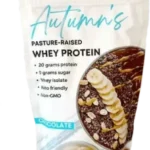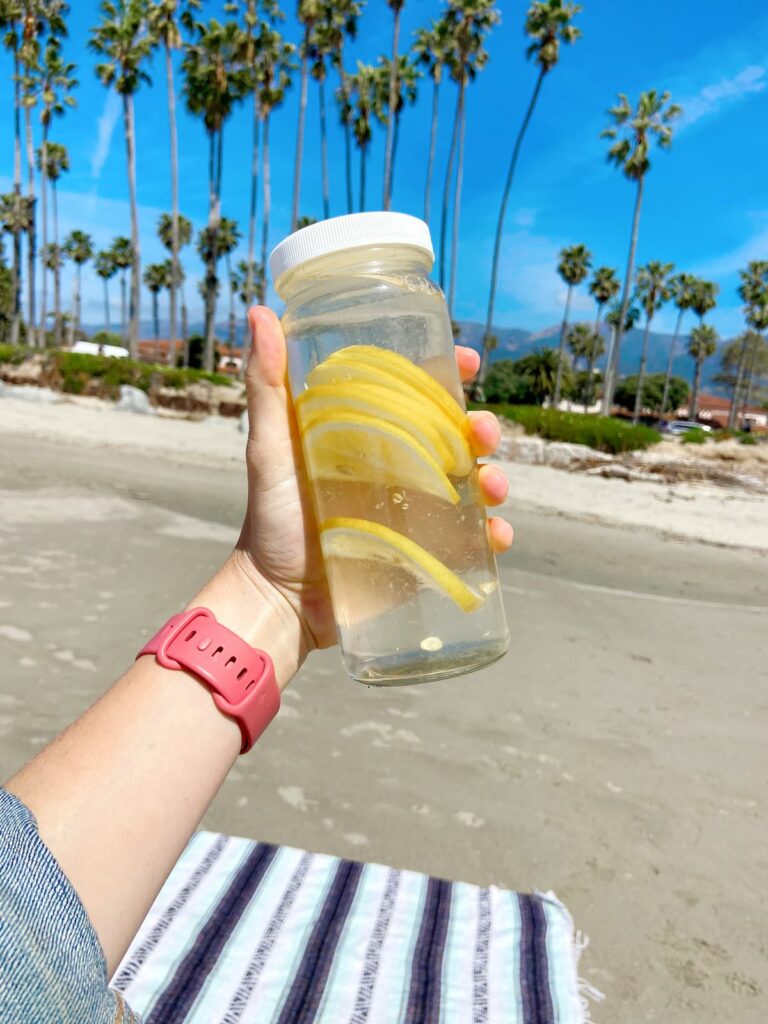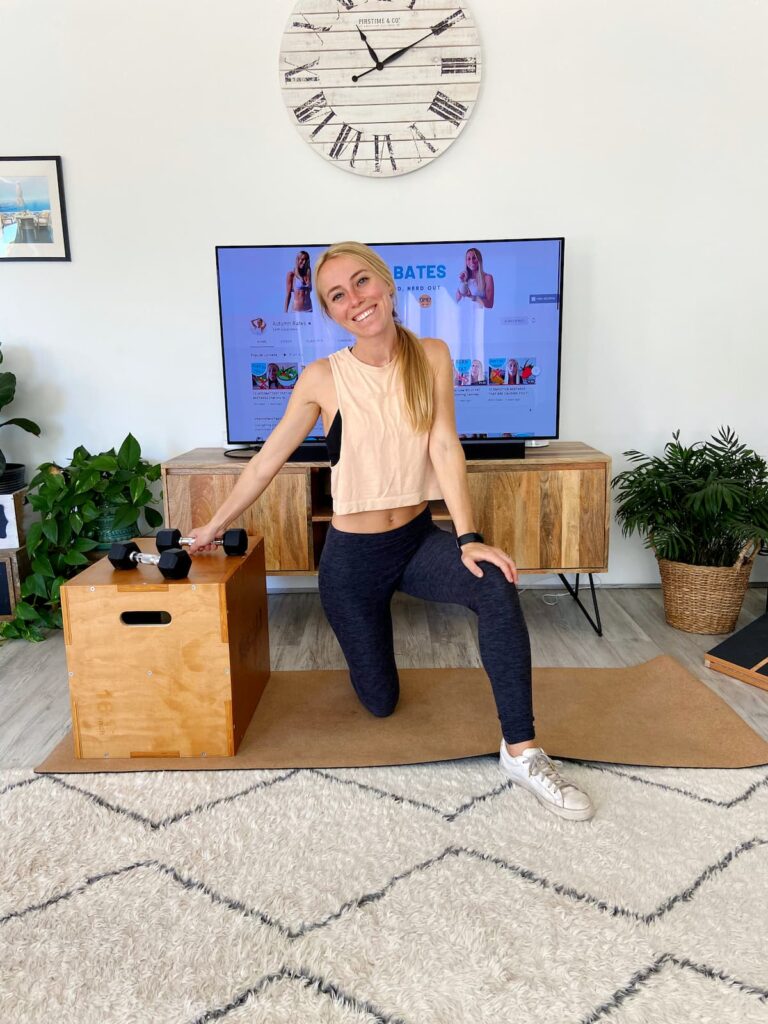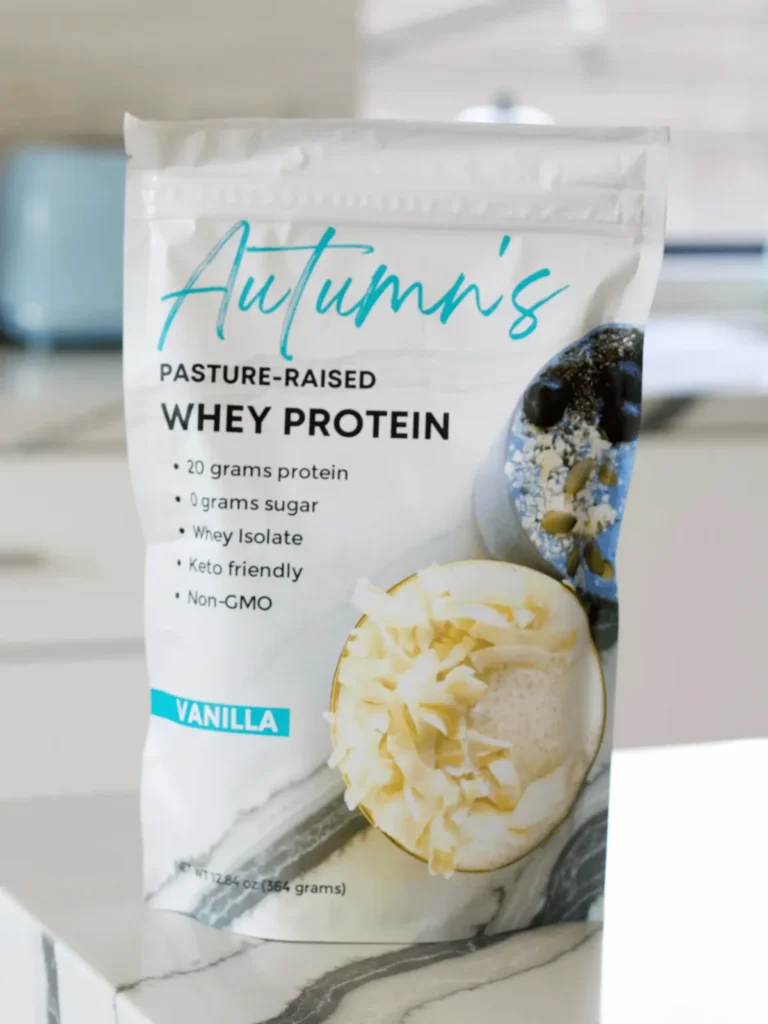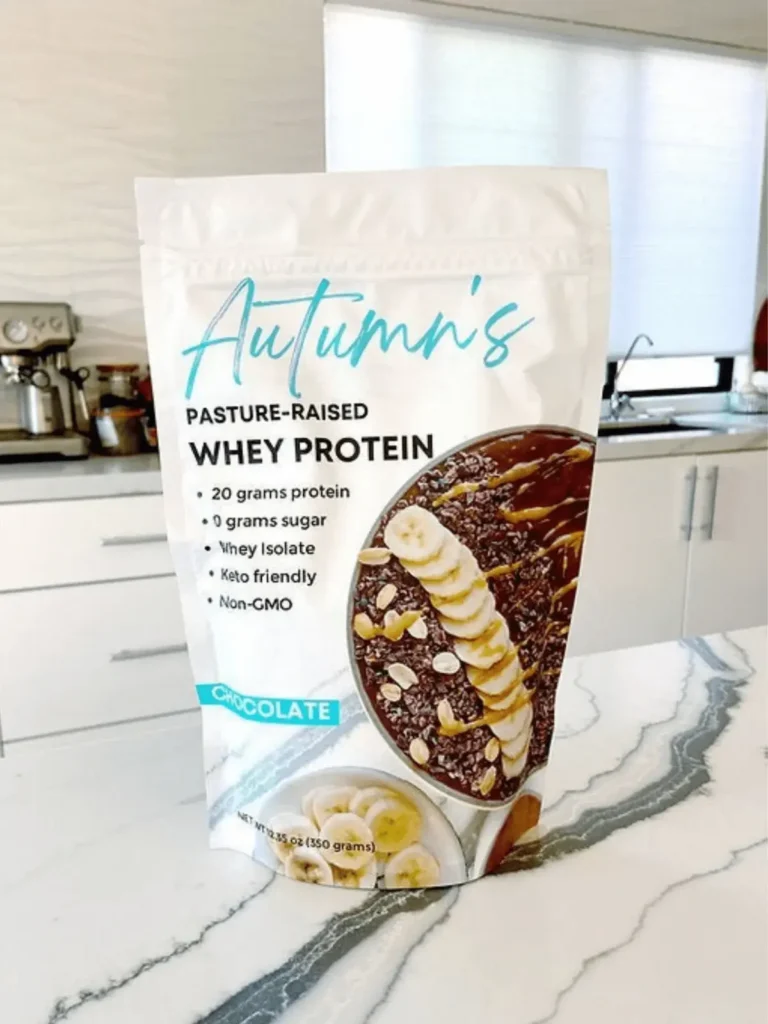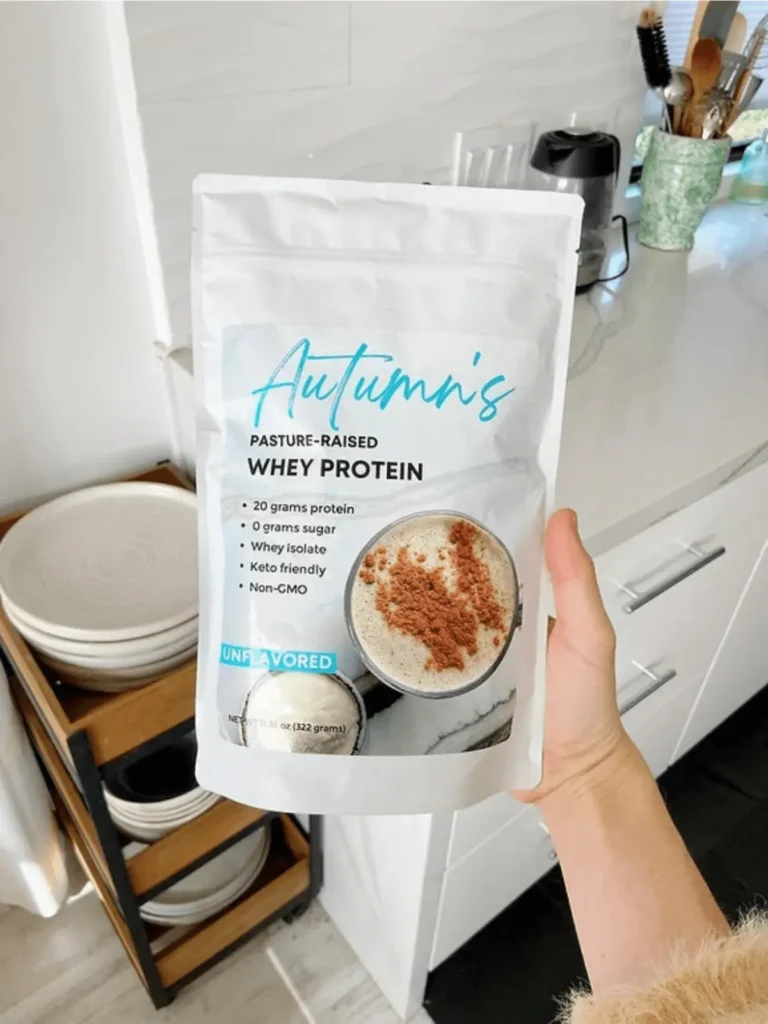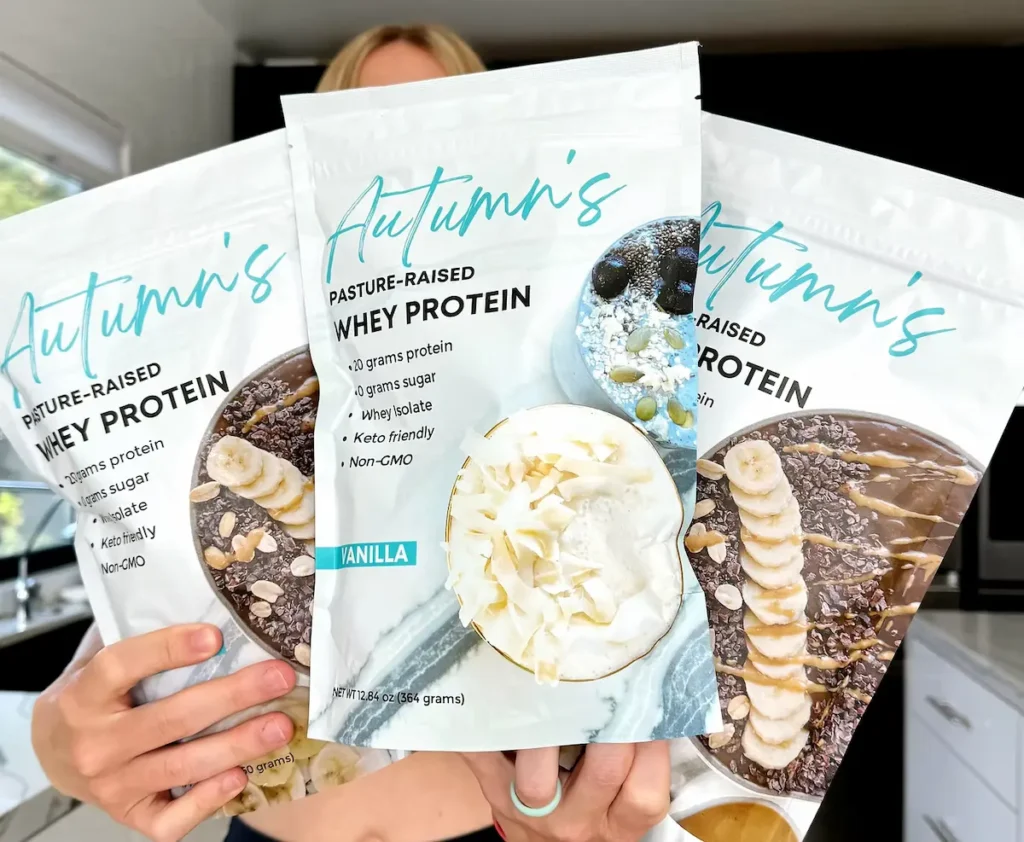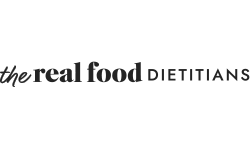These are the most important intermittent fasting tips for beginners if you want to lose weight and keep it off.
If you’re new to Intermittent Fasting, it can come off deceptively simple.
You just eat less often and that’s it, right?
Although that is the crux of Intermittent Fasting, there is quite a bit of nuance to it as well.
If you miss those little details, it could be the difference between you achieving your goals and you entirely reversing your progress.
So today, I’m sharing 10 Intermittent Fasting do’s and don’ts to help you avoid some of the most common (and detrimental) mistakes while still feeling great and achieving your goals.
Let’s dive into it.
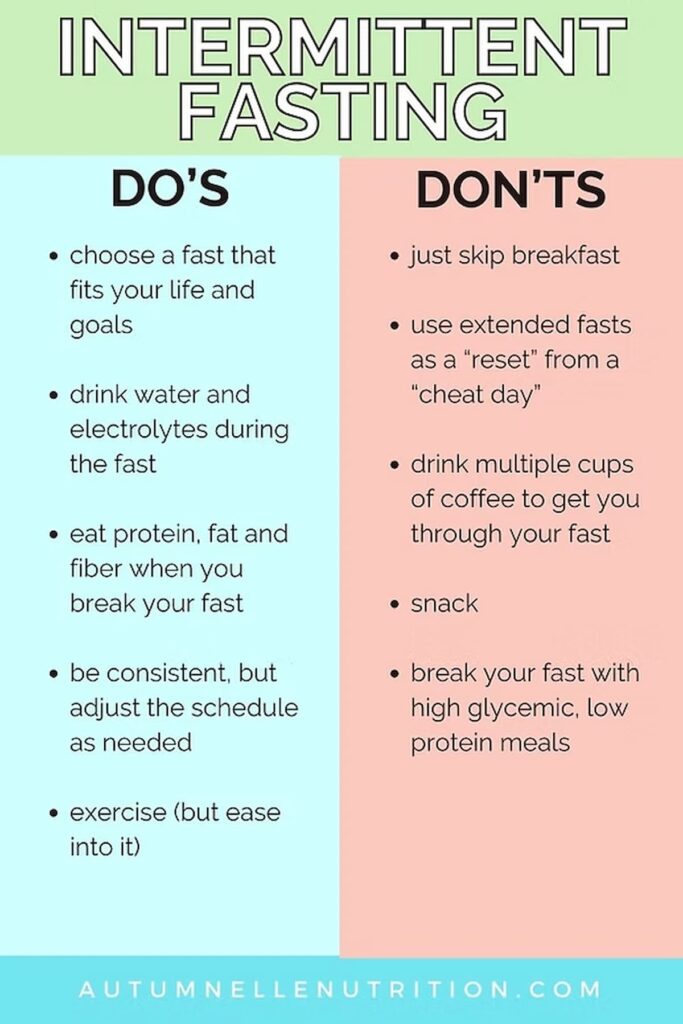
1. DO choose a fasting length and schedule that fits your life + goals
You’ve likely heard a lot about 16 hour Intermittent Fasting. Or perhaps you’ve had a friend who had great success with OMAD (one meal a day fasting). And although there are a lot of different ways you can fast, not every type of fast will work for you, your goals or your fitness level.
Typically, regardless of where you’re starting, it’s a good idea to ease into Intermittent Fasting with a 12 hour fast. This means you’ll have a 12 hour eating window (for example, 7am-7pm).
From here, you can fine tune your Intermittent Fast to best fit your goals and lifestyle.
It’s important to note that a longer fast is not always better (and can sometimes even be detrimental to your goals).
Instead, you need to find the right fasting length that fits you.
To help you determine a good fasting length to aim for, you can check out my free Intermittent Fasting schedule quiz HERE.
2. DON’T just skip breakfast
This is one of the most common mistakes beginners to Intermittent Fasting make.
The benefits of Intermittent Fasting don’t come from eating less, rather it comes from eating less often.
When we eat less often, it allows the body to begin to “re-learn” how to burn fat as fuel during the fasted state.
It also turns on our gut cleaning process called the Migrating Motor Complex.
If you simply eat less (by skipping a meal), you’ll very likely lose important muscle mass and bone density.
When we lose muscle and bone, it increases our risk for fractures while also drastically slowing down our metabolism.
The goal with Intermittent Fasting (and what we teach in the Complete Intermittent Fasting Bundle) is to eat enough for the body’s needs during a smaller eating window.
3. DO drink water and electrolytes during the fast
When we fast, our storing hormone insulin starts to dip down.
With this dip in insulin, the body tends to release a lot of water and sodium. This loss in water and electrolytes can lead to dehydration and an electrolyte imbalance.
As a result, it’s common to experience headaches, muscle aches, brain fog and low energy levels.
But this can also be entirely avoided by drinking enough water and electrolytes.
You can check out my full blog post on this topic HERE.
Related Reading: Intermittent Fasting and Electrolytes 101
4. DON’T drink multiple cups of coffee during the fast
Coffee is a great source of antioxidants and has been studied to help improve physical and mental performance.
But coffee also acts as a natural appetite suppressant.
This might sound like a good thing when you first start Intermittent Fasting, but believe it or not the longer you use Intermittent Fasting the less hungry people tend to become.
This is because the body becomes more efficient at burning fat as fuel during the fast which supplies our brain and body energy when we’re not eating.
If you add multiple cups of coffee into the mix then this can result in significantly under consuming on important nutrients needed to prevent muscle and bone loss because you’re simply not hungry.
Ideally, aim for no more than 1-2 cups of coffee per day to help keep your caffeine intake at a manageable level. For some people, less coffee might be needed.
Related Reading: 10 Things You Can Add To Your Coffee While Fasting
5. DO break your fast with protein, fat and fiber meals
The fast is important, but what you break your fast with is even more important.
If you break your fast with the wrong types of foods, it can result in unstable blood sugar levels that lead to energy crashes, fatigue and intense hunger/cravings.
Breaking the fast with the wrong types of foods can also result in muscle loss and even fat gain.
So although Intermittent Fasting is a great tool, it’s important to not ignore your eating window.
The best foods to break a fast with are those that are rich in high quality forms of protein, fat and fiber.
These foods help to stabilize the blood sugar level, prevent hunger and sugar cravings, boost satiety and prevent muscle loss during the weight loss process.
Thankfully, this combination of food also makes some of the most delicious and satisfying meals you could imagine!
Think protein waffles, spicy chili, bell pepper sandwiches, superfood pancakes, egg scrambles, street tacos and MORE.
You can grab over 100 delish and simple recipes to support your Intermittent Fasting journey with the Complete Intermittent Fasting Bundle HERE.
Since 2018, the Bundle has helped thousands of men and women around the world to use Intermittent Fasting and science-backed strategies to achieve their weight loss and wellness goals.
Start your Intermittent Fasting journey TODAY while still eating amazing meals that nourish your body.
Head over HERE to get started.
6. DON’T snack
To help double down on the benefits of Intermittent Fasting, it’s best to remove snacks and instead focus on eating 3 meals a day (during your eating window).
This allows you to maximize your meals with protein, fat and fiber while still getting the benefit of taking a break from eating between meals.
Snacking makes it difficult to eat full and satisfying meals.
Snack foods are usually not the most nutrient dense options either.
Because you have a smaller window of time to eat your meals, it’s best to maximize that time with nutrient dense meals, not snacks.
7. DO be consistent, but adjust as needed
Consistency with your Intermittent Fasting schedule is key for success.
However, in order to make Intermittent Fasting a lasting tool, you also need to adjust your schedule as needed for important events like birthdays or celebrations.
If you constantly find yourself feeling left out because something “doesn’t fit your eating window”, then you won’t stick to Intermittent Fasting long enough to see the results or benefits.
This is where using window shifting can be a helpful tool.
Window shifting allows you to enjoy celebrations while still reaping the benefits of Intermittent Fasting.
You can grab the details of window shifting in the Complete Intermittent Fasting Bundle as well as with THIS blog post.
8. DON’T use longer fasts to “reset” after a “cheat meal”
Often times I’ll see people use a longer fast (such as a 20-24 hour fast) after a vacation or a “cheat day” to help them “get back on track”.
Unfortunately this method tends to lead to a form of compensation and yo-yo dieting.
Rather than “punishing” the body with a long fast, I’ve found it best to simply go back to your usual Intermittent Fasting and meal schedule the very next day.
This will likely lead to a shorter fast between the “cheat day” and your next eating window, but that’s okay.
One day of a shorter fast will not ruin your results.
Jumping straight back into your routine will help the body get back on track faster without experiencing yo-yo results.
9. DO exercise (but ease back into it)
Exercise (specifically walking and strength training) are amazing tools to help double down on Intermittent Fasting results.
This is why the Complete Intermittent Fasting Bundle includes an optional 3 week resistance training program to pair with your meal plan.
But during the first few weeks of Intermittent Fasting, you might not want to incorporate it just yet.
During those first few weeks, the body is learning how to become metabolically flexible (meaning, it’s learning how to switch back and forth between fat and carb burning more easily).
This adjustment can take a few weeks which means you might not have access to your full energy potential for a workout.
This is why I usually recommend sticking to walking at the beginning of an Intermittent Fasting journey.
Once the body has adapted (usually after a few weeks), then exercises like resistance training can be slowly added in, according to your fitness level.
Related Reading: Free 28 Day Fat Burning Walk Plan
10. DON’T break your fast with high glycemic load, low protein food
Foods that are high glycemic load include nearly everything made with processed carbs and sugars. For example, chips, cookies, most breads, most flours and all drinks with added sugar fall into this category.
These foods can result in unstable blood sugar levels, mood swings, energy crashes and even muscle loss.
Instead, we want to focus on those foods that are rich in protein, fat and fiber to help ease the body from a fasted to a fed state and maximize Intermittent Fasting results.
Related Reading: Complete Low Glycemic Load Food List
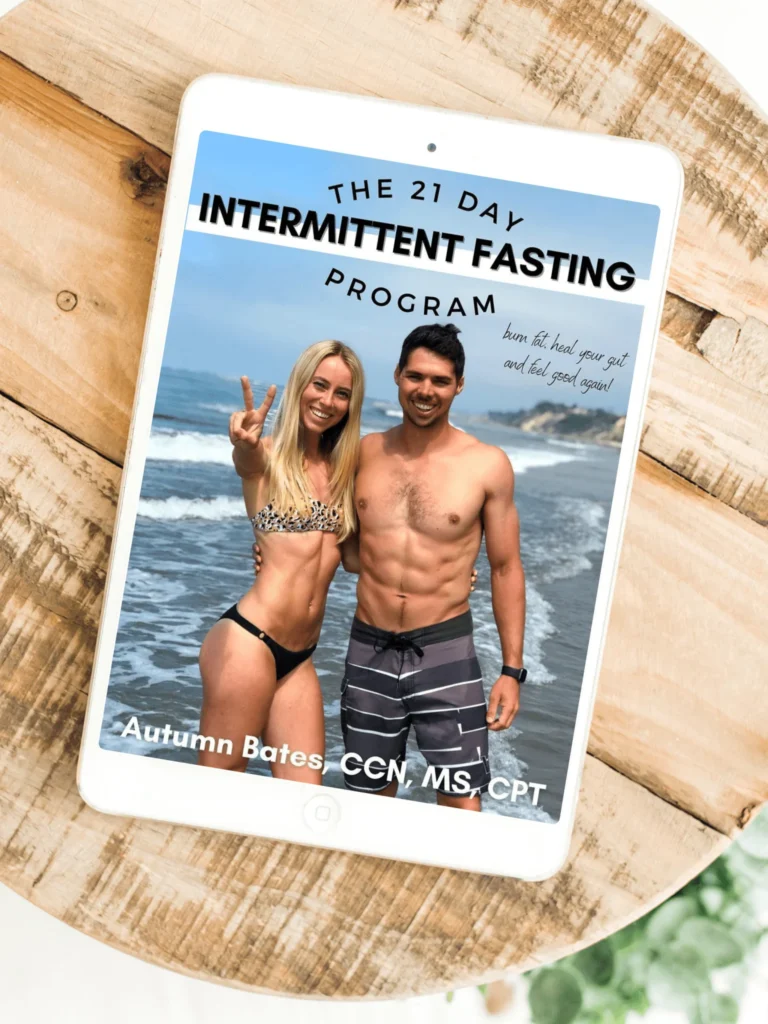
Tap into fat burning
The 21 Day Intermittent Fasting Program
The 21 Day Intermittent Fasting Program provides step-by-step strategies to help you use Intermittent Fasting with delicious, protein-packed meals to support fat loss, reduce hunger, and boost gut health.
Studies
TK
